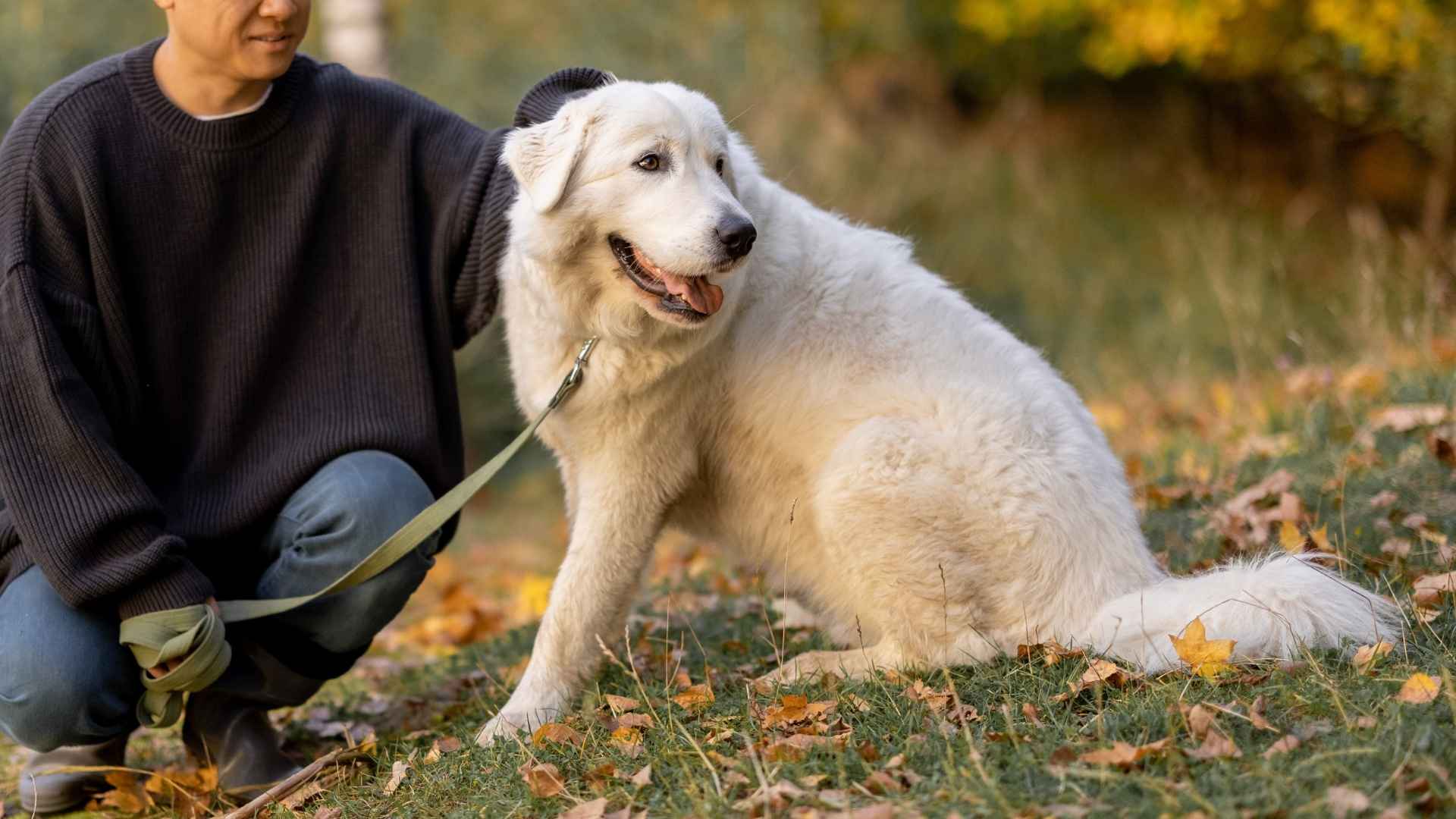Can a dog protect your home without barking all day, pacing the fence, or stressing out your guests? The answer is yes, and it comes down to breed and temperament.
While most people associate watchdogs with noise and intensity, some of the best guardians are the calmest ones. These dogs don’t need to prove anything. Their presence alone sets boundaries. They observe instead of overreact.
They respond instead of panicking. And they do it all while keeping your household in a state of quiet confidence. Calm watchdogs are rare—but they exist, and they’re exactly what many people want: balanced, composed, and capable.
If you’re seeking a breed that blends security with serenity, there are several that rise above the rest. In this article, we’ll walk you through the calm watchdog breeds that offer strong protection without the noise.
Calm Watchdog Breeds
1. Cane Corso
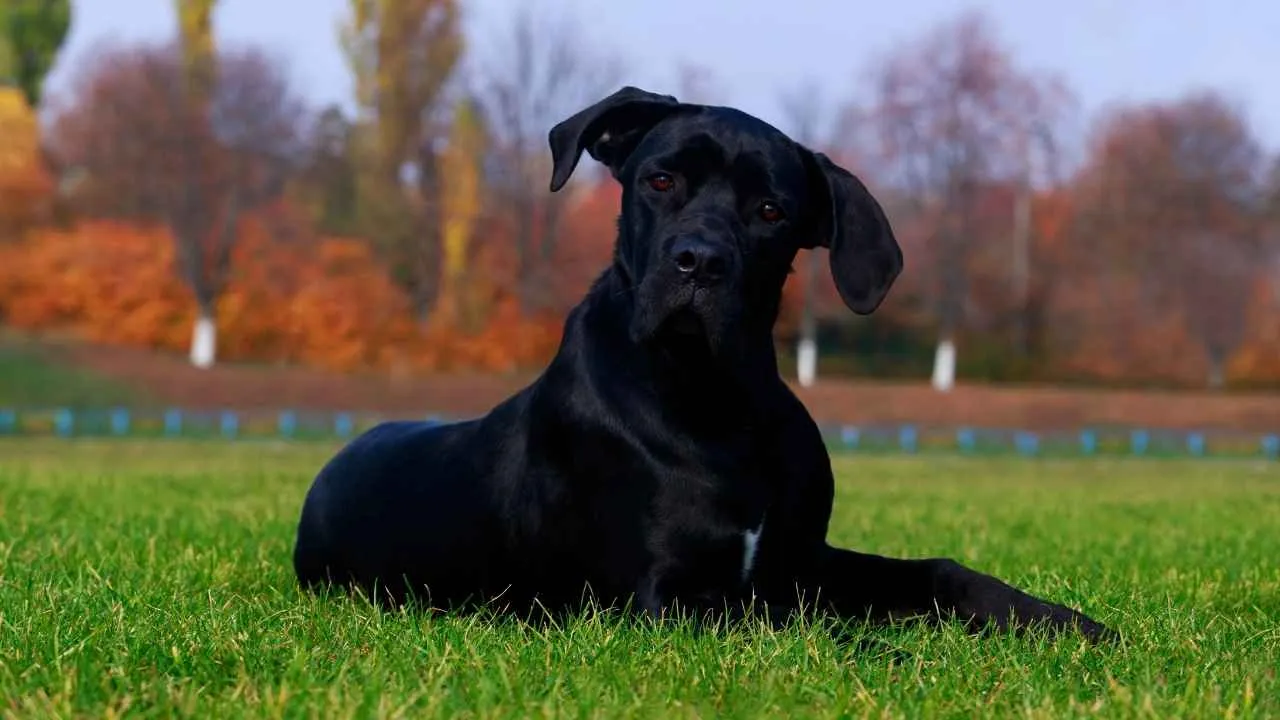
Cane Corsos are steady-nerved dogs known for their even temper and firm presence. Their alert gaze and grounded posture make them dependable natural sentries. Without constant barking or erratic energy, they monitor their surroundings with quiet confidence.
Physique That Commands Respect
Their muscular frame and strong bone structure reflect centuries of functional breeding in rural Italy. A mature male can weigh up to 110 pounds while maintaining fluid, athletic movement. This combination of power and control contributes to their low-reactive demeanor indoors.
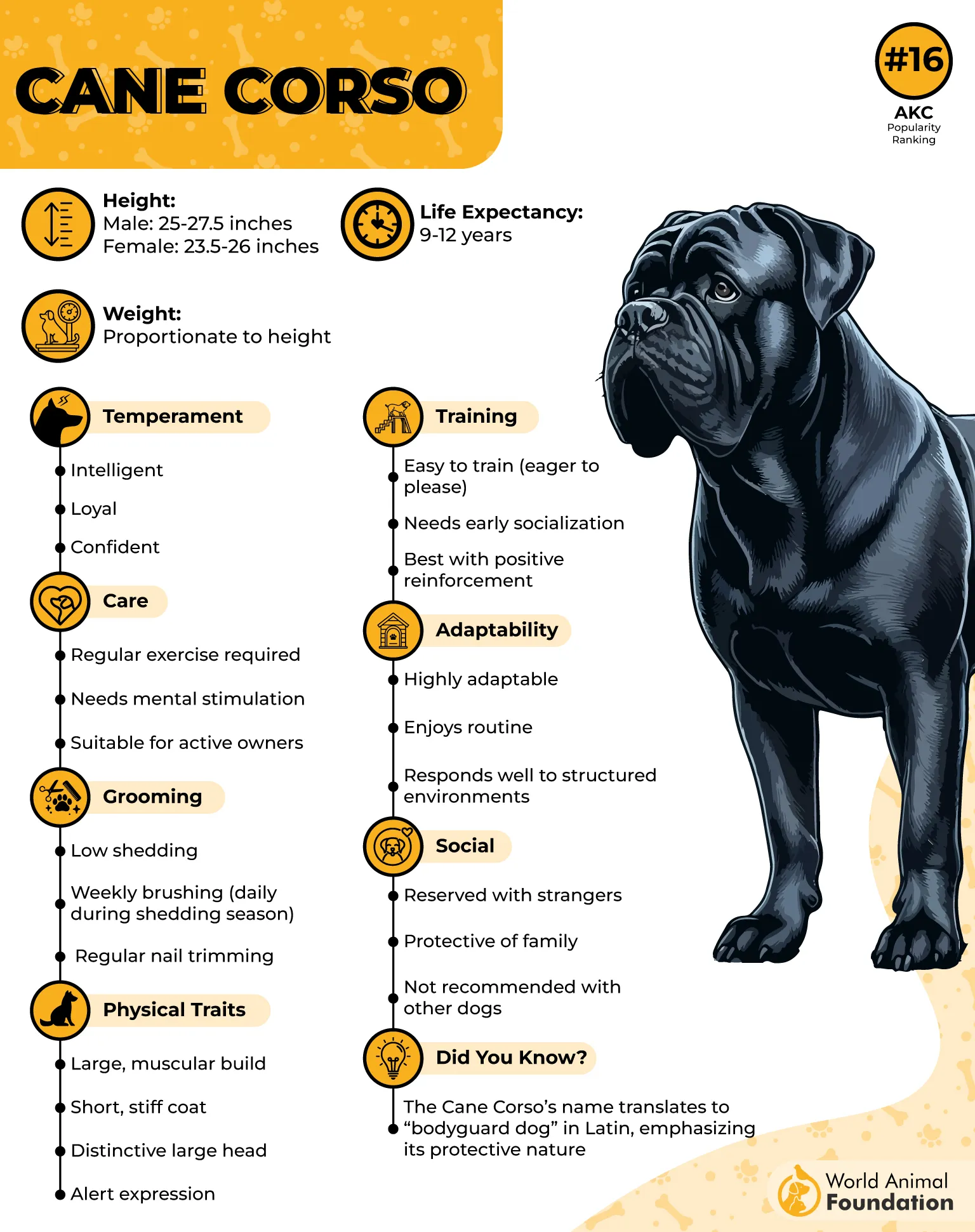
Loyalty Rooted in Silent Observation
They are exceptionally devoted to their households and develop a deep bond with family members. Corsos tend to sit or lie near entryways, surveying calmly without needing prompts. They may follow movement with their eyes before deciding whether action is necessary.
Historical Role That Still Defines Them
Used historically to protect farms, livestock, and estates, their reputation as trusted guard dogs continues today, as per PetMD. Among large dog breeds, few possess such a blend of patience, protectiveness, and physical control.
2. Rhodesian Ridgeback
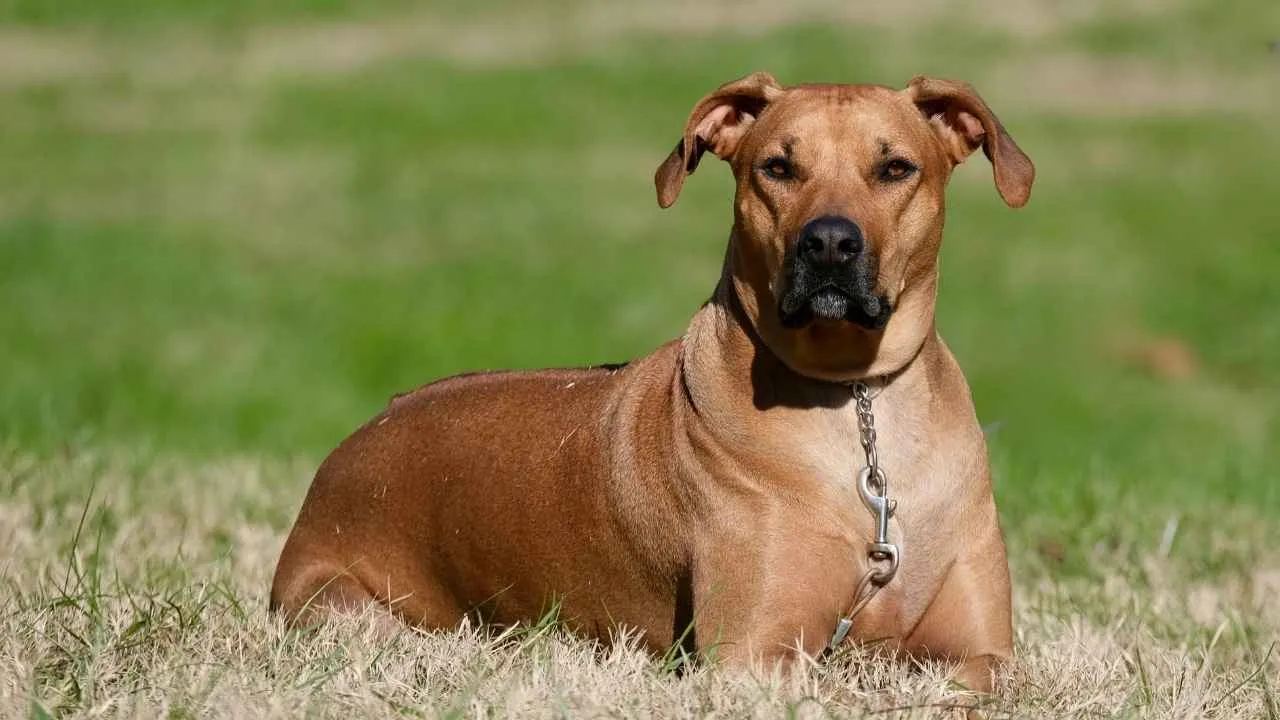
Rhodesian Ridgebacks are quiet and composed, often observing before they act. Their energy remains steady indoors, especially when they feel secure in their space. While physically capable, their calm presence is what makes them reliable for watch duties.
Body Built for Silent Surveillance
Muscular but lean, they can weigh 70–85 pounds, yet their movement remains smooth and efficient. Their upright stance and forward-set ears signal constant awareness. This physical poise plays a key role in their self-assured, grounded temperament.
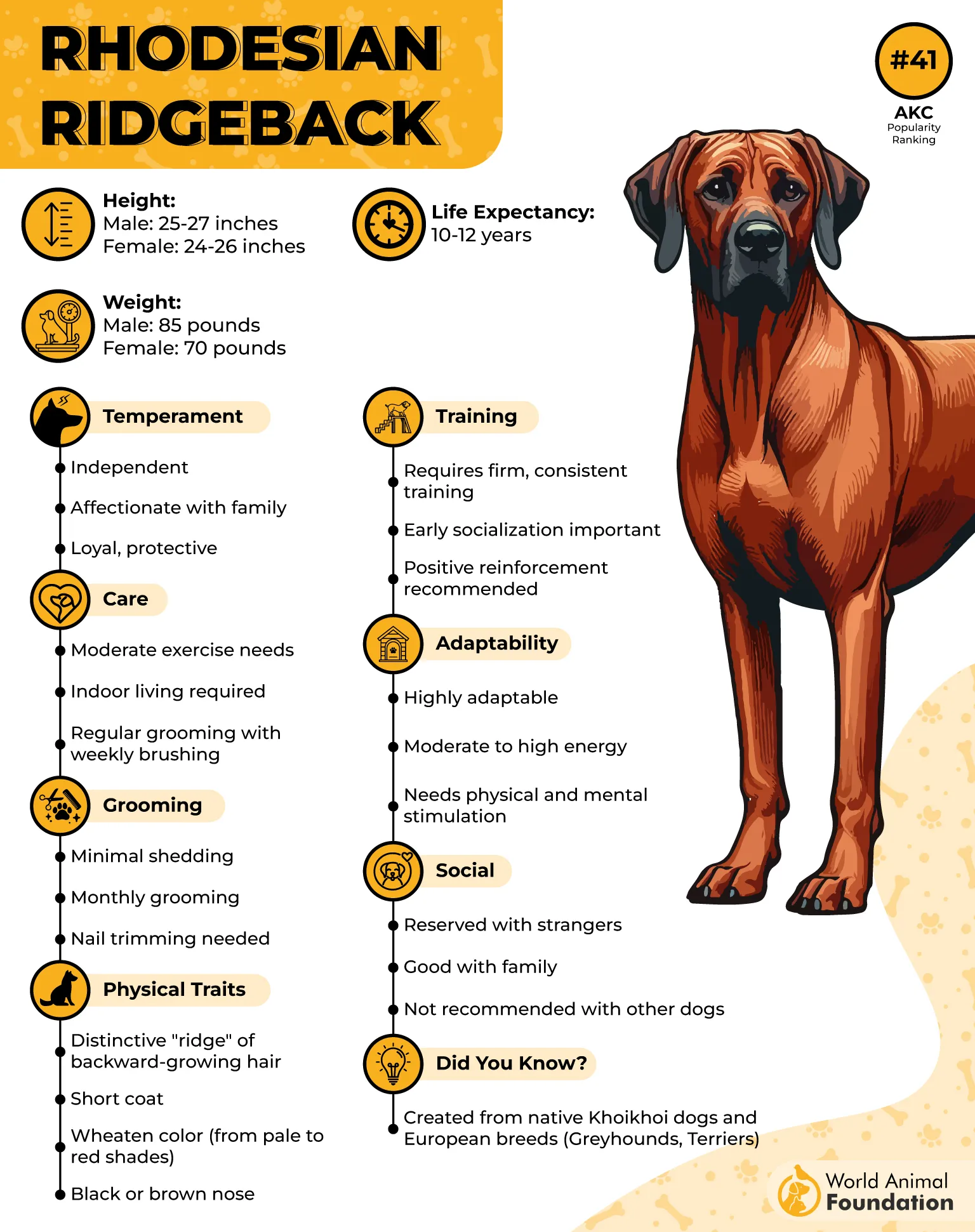
Confidence that Doesn’t Escalate Easily
They have strong territorial instincts but rarely overreact to minor triggers. With proper training, they quickly learn when alerting is necessary and when it isn’t. Their balanced response makes them well-suited for families seeking calm protection without over-vigilance.
Historical Use Defines Their Instincts
First developed in southern Africa for hunting large game, their guarding ability was equally valued. Today, they are respected as excellent guard dogs and natural protection dogs, especially in quiet rural or suburban homes. Their presence alone often acts as a deterrent.
3. Anatolian Shepherd
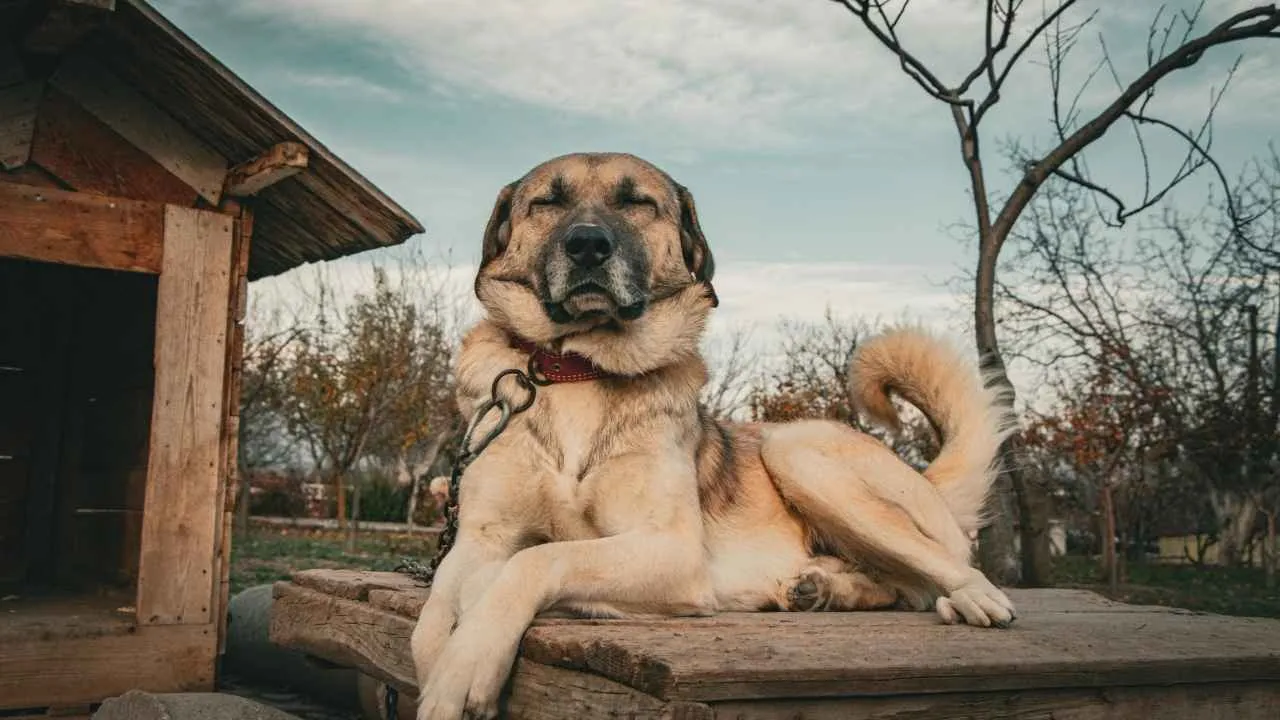
This breed has been shaped by centuries of independent work in open terrains without direct human instruction. Their calm vigilance is part of their DNA, not the result of training. With minimal vocalization, they rely more on their physical presence than noise to deter intruders.
Self-Governed, Not Distracted
They are capable of identifying threats without overreacting to neutral situations. Instead of barking constantly, they evaluate movement carefully before responding. This gives them a composed edge that suits quiet properties and wide outdoor spaces.
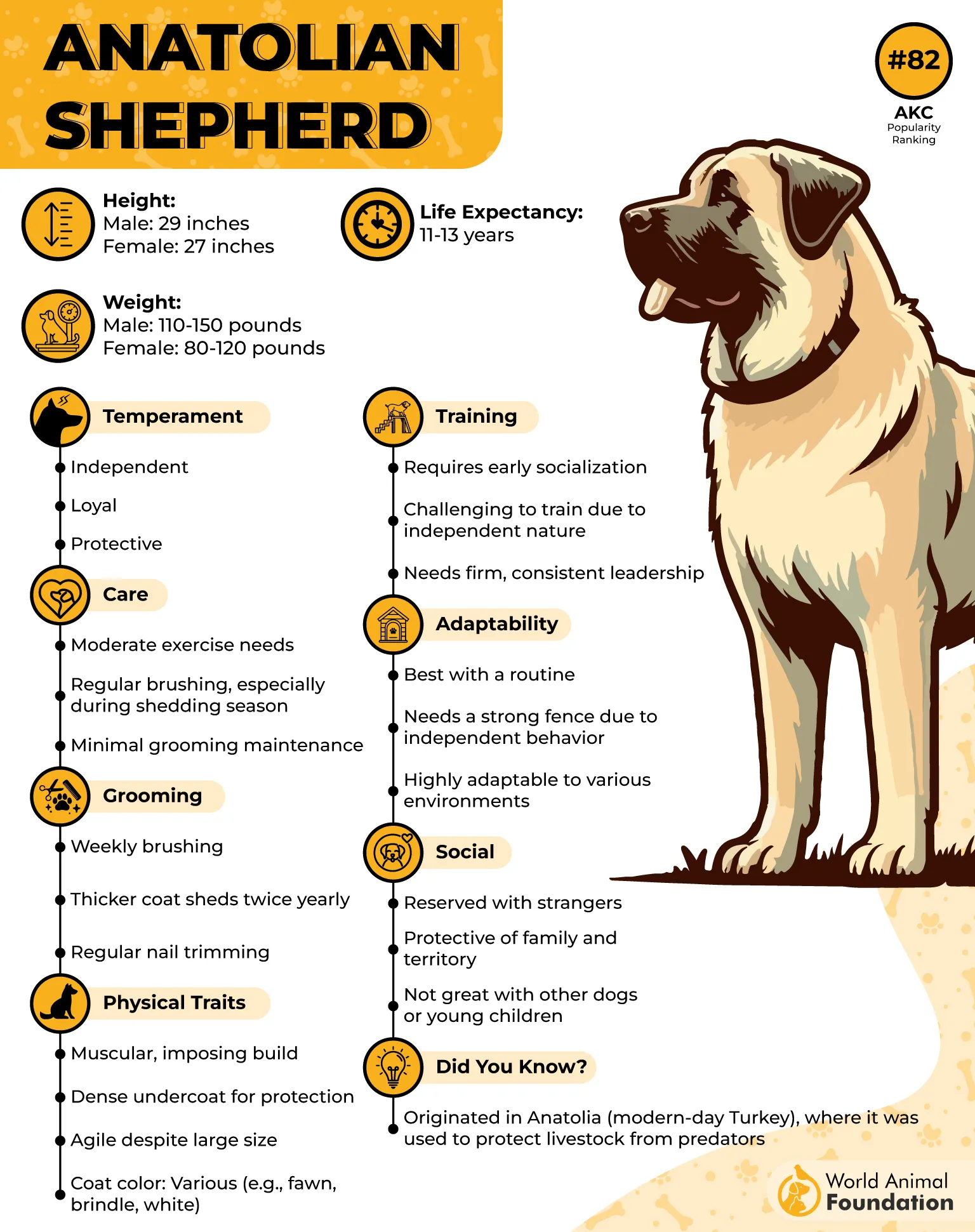
A Temperament Built for Patience
Anatolian Shepherds are deeply territorial but don’t need constant activity or stimulation to remain stable. They spend hours in one spot watching, especially near fences or gates. Their low-energy exterior hides a powerful ability to spring into motion when necessary.
History in Harsh Environments
These dogs were traditionally used to guard livestock from wolves and jackals in rural Turkey. Known as great guard dogs, their protective instincts extend to family and even other dogs in the household. Despite being an energetic breed, they conserve energy until a true threat appears.
4. Doberman Pinscher
Dobermans are known for their sharp focus and quiet strength, standing still for long periods while monitoring their surroundings. Their alert stance often includes forward ears and a lowered, still tail. Even in unfamiliar settings, they assess situations before reacting physically or vocally.
Athletic Control and Training Response
A healthy Doberman has a lean, muscular frame that supports smooth, controlled movement. Their responsiveness to direction allows handlers to guide them without shouting or overcorrection. This natural discipline makes them well-suited for environments requiring calm authority.
Social Behavior with Confidence
Well-raised Dobermans are naturally secure around family members and respectful with other animals in the home. They rarely engage in unnecessary excitement and often remain composed when strangers enter the space. Their calm posture alone is often enough to deter threats without aggression.
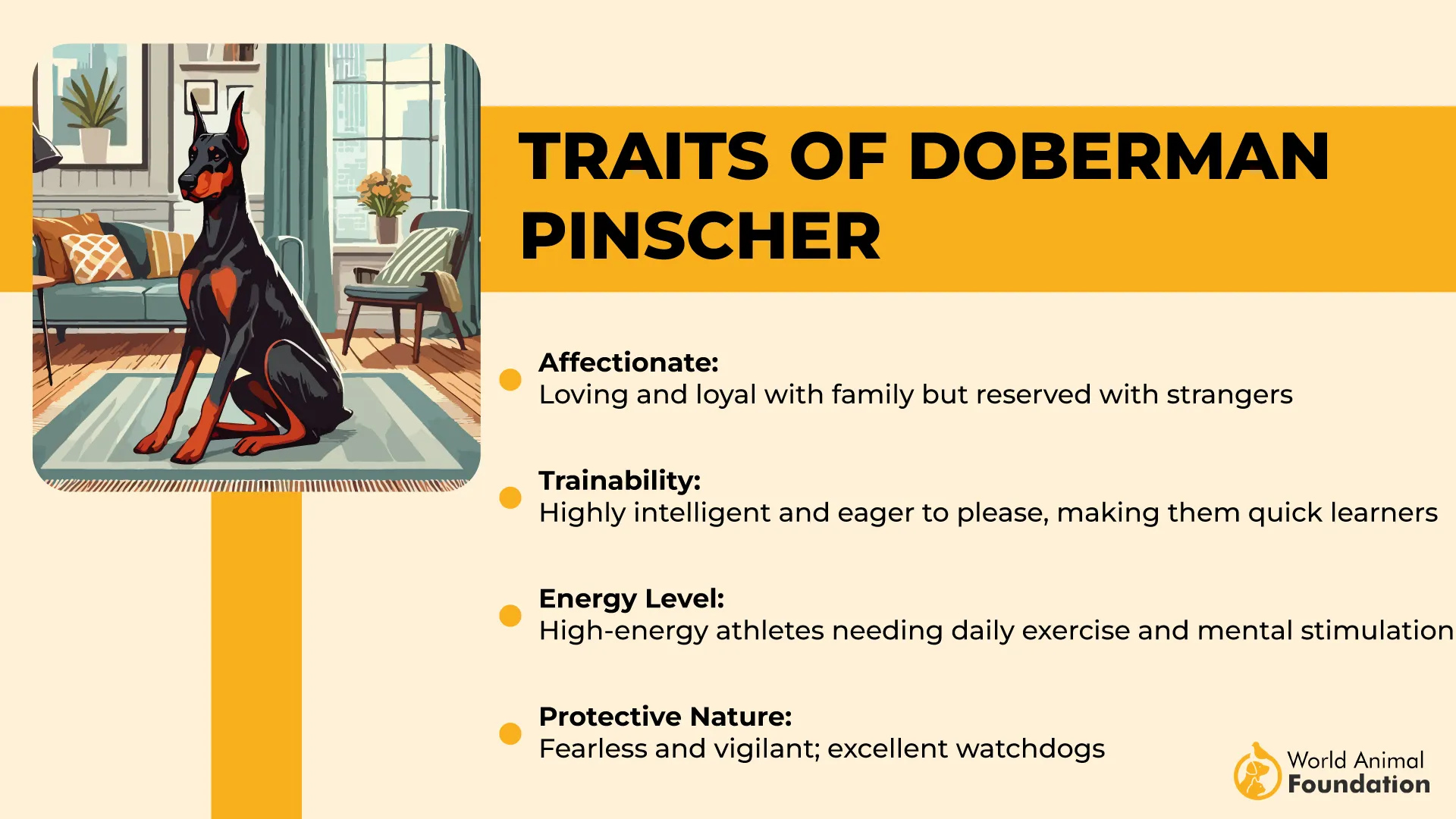
Intelligence with Emotional Sensitivity
This breed ranks among the best dog breeds for personal protection due to its balanced mindset and reliable presence. Their ability to detect tone shifts makes them quick to adjust behaviors without force. Many are praised for their gentle nature once they form trust with their people.
5. Boxer
Boxers stay vigilant without becoming high-strung, which helps them remain composed even in unpredictable environments. Their body posture changes subtly when they sense unfamiliar activity nearby. A confident stance and still gaze often replace unnecessary vocal reactions.
Muscle Meets Responsiveness
Known for their agility and quick reflexes, Boxers are naturally equipped to monitor spaces with focus. Their square build and powerful chest create a solid presence that deters intruders without theatrics. This physical readiness pairs well with their emotional control indoors.
Social Yet Selective with Attention
They are outgoing with familiar faces but maintain a cautious distance around strangers. Boxers prefer to watch before they engage, often waiting for a cue from their owner. This deliberate behavior makes them dependable in family settings without being overly reactive.
A Steady Role in Domestic Security
Boxers remain one of the most trusted family guard dogs due to their balance of warmth and awareness. Among well-known guard dog breeds, they’re valued for staying calm under pressure. Their history as a protective dog in both civilian and military roles adds to their credibility.
6. Rottweiler
Rottweilers are calm when their daily environment is predictable and structured. They don’t react impulsively, which allows them to assess situations with a pause. Their mental composure is often underestimated in comparison to their physical strength.
Built for Controlled Defense
With a broad chest and thick neck, their body is built to block, hold, and deter without unnecessary motion. The jaw pressure can reach over 328 PSI, but their bite isn’t triggered without real cause, as mentioned in Dogs Bite Laws. Their instinct is to stay still and monitor before moving.
Strong Bonds and Measured Reactions
They are highly attuned to their family’s presence and energy shifts in the home. Many quietly shadow their owners through the house, resting near doors or footpaths. This close presence reflects their protective nature, even without direct commands.
Centuries of Reliable Service
From driving cattle in Roman times to working alongside police today, they have adapted to various protection roles. A good guard dog when properly trained, the Rottweiler has remained one of the most stable dog breeds in security work for generations.
7. German Shepherd
German Shepherds are widely known for their composed alertness, especially in new or dynamic situations. Their ability to stay focused without overreacting is a key part of their working heritage. They quietly assess a situation before choosing whether to intervene or remain still.
Physique Built for Purpose
A strong back, muscular hindquarters, and angled stance allow for agility during patrol or movement, as stated in PetMD. Their stride is long and smooth, which helps them cover ground without sudden bursts of energy. This fluid movement supports their role as efficient, watchful companions.
Work Ethic Rooted in Intelligence
These dogs quickly recognize routines and human behaviors through high pattern recognition. Among the smartest breeds, they consistently perform in tasks that require silent focus and judgment. Many handlers trust their Shepherds to make independent decisions on-site.
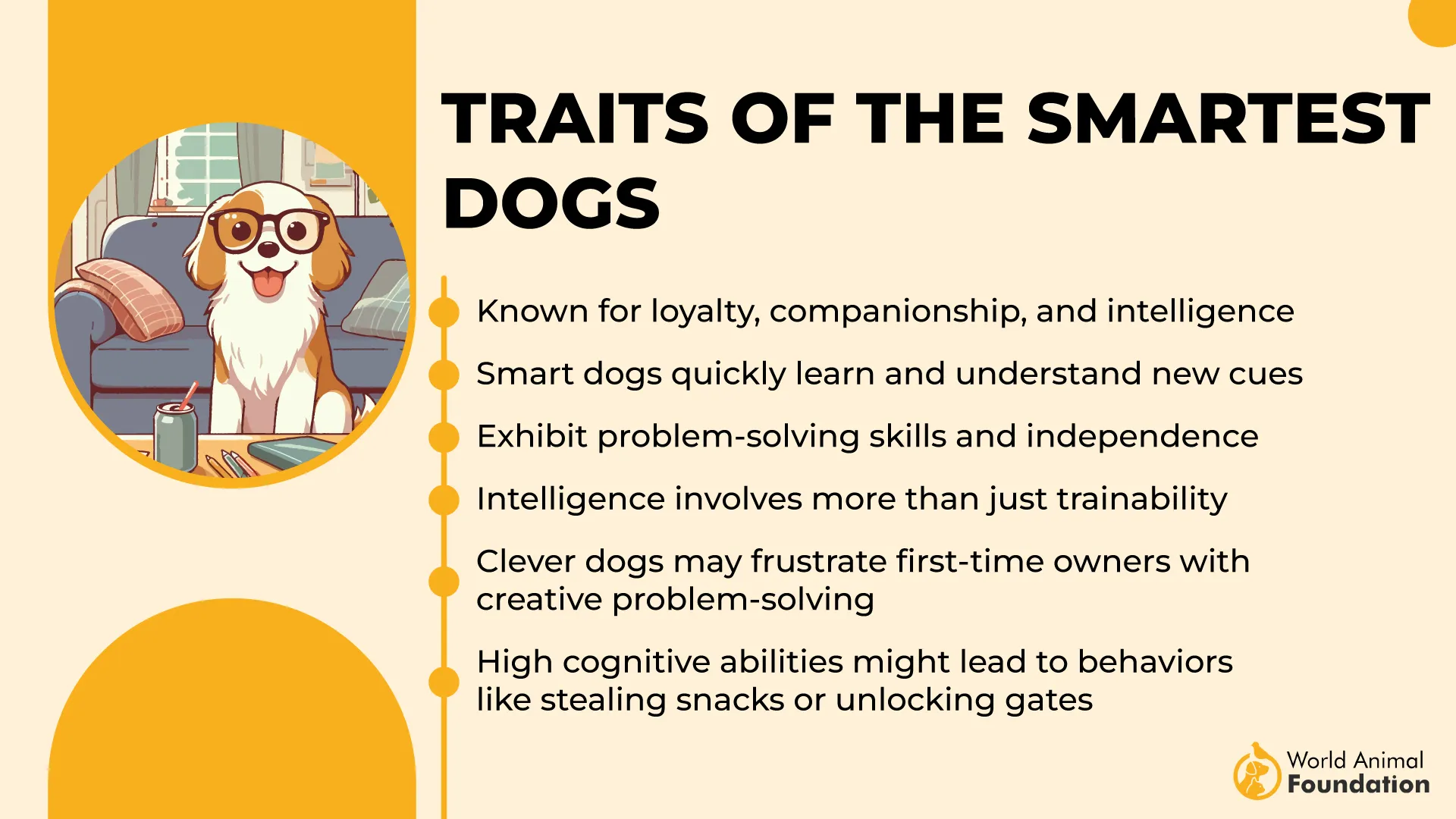
Protective Without Instinctive Noise
While they may vocalize when prompted, trained Shepherds are naturally quiet observers. They often position themselves in clear view of doorways or gates, simply watching. This calm alertness makes them dependable choices for both working settings and as family pets in suburban homes.
8. Bernese Mountain Dog
The Bernese Mountain Dog is steady, even-tempered, and composed in new environments. Despite their large build, they tend to move slowly and with measured intent indoors. Their deep bark is usually reserved for meaningful cues, not background noise.
Strength Without the Agitation
Built to haul carts and perform alpine tasks, their body reflects stamina more than intensity. A fully grown male can weigh between 90–115 pounds with a balanced gait. Even when guarding, they rely more on posture than aggression to signal control.
Gentle by Nature, Protective by Instinct
They are watchful yet approachable, especially around familiar faces and younger family members. Their thick coat often brushes gently against those they lean on during quiet, alert moments. This soft, physical presence reinforces their trust-based guarding style.
Compatibility and Social Adaptability
Berners often coexist well with other pets, making them suitable for multi-animal homes. As gentle giants, their alertness blends with a calm demeanor rather than nervous energy. They are also known to be fiercely loyal, often placing themselves between their people and unfamiliar stimuli.
9. Great Pyrenees
The Great Pyrenees shows quiet strength and is known for staying composed in unpredictable situations. Its roots in guarding livestock in isolated mountain regions shaped a deeply independent mindset. That natural calm allows them to watch silently without needing prompts or direction.
Built for Silent Protection
Their thick double coat, massive build, and steady posture give them a protective presence without noise, as Orvis claimed. These dogs can sit still for long stretches, watching their territory without restlessness. Barking is rare and only triggered when a real threat is sensed.
Gentle, Yet Highly Protective
Their protective nature forms early, often visible when they choose resting spots near doors or children. They quietly observe more than they react, a quality that makes them stable around family. Their bond with humans is deep, and their loyalty runs strong.
Requires Both Space and Engagement
They may seem low-energy, but they benefit greatly from outdoor time and structured mental stimulation. Activities like scent games or walking routes help satisfy their need to think while staying active. With the right routine, they become loyal companions and a peaceful furry friend.
10. Bullmastiff
The Bullmastiff has a natural calmness that doesn’t rely on hyper-vigilance or noise. They stay composed in new situations, using stillness to assess rather than react. Their ability to remain quiet yet alert indoors makes them ideal for structured home environments.
Physical Strength That’s Balanced
Males often weigh between 110 and 130 pounds, with broad chests and thick necks that show controlled power. This muscular build supports their historic role of restraining intruders without biting. Their wide stance and deliberate walk naturally discourage threats.
Strong-Willed Yet Focused
While their temperament is steady, they do require early and proper socialization to ensure balance around guests and animals. Bullmastiffs respond best when trained properly, especially with short, firm commands. Without harshness, they develop trust-based control and consistent behavior.
Loyal to Their Core Purpose
They were originally bred by English gamekeepers in the 19th century to catch poachers without fatal force. That deep-rooted instinct still supports their bond to a family’s safety, especially when raised alongside small children under supervision. Their sense of territory is quiet but unwavering.
Conclusion
Calm watchdogs prove that security doesn’t need to come with a loud bark or restless pacing. While many dog breeds thrive in active or noisy roles, others offer peace without sacrificing protection.
These dogs often come from strong working lines—flock guardian types, police dogs, and even hunting dogs—yet remain composed indoors. They’re often extremely intelligent and learn quickly when to act and when to wait.
Some may be wary of strangers, but that caution brings safety, not stress. Whether you’re considering hypoallergenic dogs or breeds used as search and rescue dogs, calmness and control can still be part of the picture. It’s all about the match.


